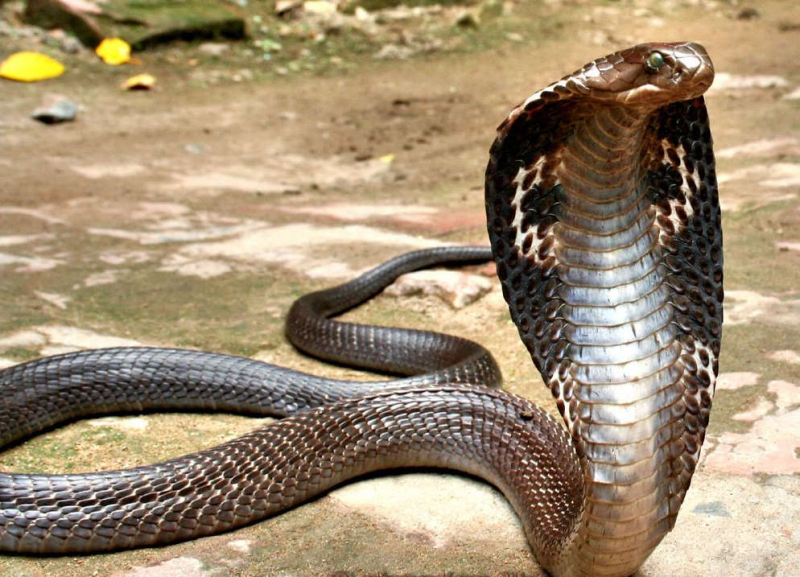Indian cobra

Top 10 in Top 11 Most Dangerous Animals in India
The Indian cobra, also known as the spectacled cobra, Asian cobra, or binocleate cobra, is one of the "big four" species of a cobra that are to blame for the majority of snakebite incidents in India. It is also found in Pakistan, Bangladesh, Sri Lanka, Nepal, and Bhutan. It differs from the king cobra, which is a monotypic member of the genus Ophiophagus. In Indian mythology and culture, the Indian cobra is adored, and snake charmers are frequently seen with them.
The Indian cobra is a species with a robust build and a medium size. Its comparatively broad and extremely spectacular hood, which it grows when threatened, makes this type of cobra easy to recognize. Several specimens show a hood mark. This hood mark can be found at the back of the hood of the Indian cobra. There are two circular ocelli patterns joined by a curving line that resemble spectacles when the hood mark is present.
The oviparous Indian cobra lays its eggs between the months of April and July. In rat burrows or termite mounds, the female snake typically lays between 10 and 30 eggs, which hatch 48 to 69 days later. The hatchlings are between 20 and 30 centimeters) long. The venom glands in the hatchlings are fully functional, and they are self-sufficient from birth.












